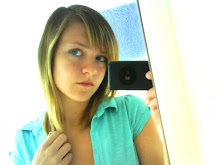
The next sound we have chosen is distriff_2.wav, which is upbeat and fast paced. This is suitable for the scenes where our main character is running through the woods because the speed of the music reflects the speed of the persons heart rate and the speed in which they are running.

In our first shot we have chosen the sound clip, cellos down down.wav because it is eery and gradually builds up tension which will be suitable for the shot because we want to open our thriller with a tense and mysterious atmosphere. This clip is 21 seconds long, and because of this we will need to extend our first shot slightly and could split the sound clip to carry on in other shots of our main character in the bathroom.

For the shot of the party we will be using diegetic music of this sound clip Chaser RMX 2.wav. We will play this through speakers while we are filming to make it seem more realistic and like it's a real party. It will be difficult to add the sound clip on after because it won't look as realistic if people are dancing at different speeds or out of time to the music. As this clip is 7 secs long we will film for the 7 seconds then cut the shot down during editing as our party shot is only 3 secs long.

For the shots of the trees with the beginning credits and for the shots imbetween, we are going to use The mind of the killer.mp3 this is because it creates a strange and creepy atmosphere while the credits are coming up, it will give the audience the sense that the film they are about to see is going to be quite scary.

The sound clip girls singing-PiSh_01.wav will be used in the beginning credits where there is a spinning round-a-bout and the mysterious ghost like person appears on them. This will represent her going around in her victims heads.













 12A – Suitable for 12 years and over. No-one younger than 12 may see a ‘12A’ film in a cinema unless accompanied by an adult. No-one younger than 12 may rent or buy a ‘12’ rated video or DVD. Responsibility for allowing under-12s to view lies with the accompanying or supervising adult.
12A – Suitable for 12 years and over. No-one younger than 12 may see a ‘12A’ film in a cinema unless accompanied by an adult. No-one younger than 12 may rent or buy a ‘12’ rated video or DVD. Responsibility for allowing under-12s to view lies with the accompanying or supervising adult.




